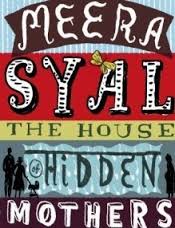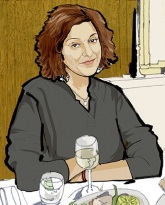The House of Hidden Mothers
Meera Syal
|
Meera Syal may be one of the country’s most popular actors, screenwriters and comedians, but when it comes to fiction, she claims to have “one good idea every 10 years”. In fact, 16 have elapsed since her last novel, Life Isn’t All Ha Ha Hee Hee, which followed on from her 1996 debut, Anita and Me. That wonderfully candid coming-of‑age tale, inspired by Syal’s experience growing up as part of the only non-white family in a mining community near Wolverhampton, has since found its way on to school and university syllabuses, though she dismissed it at the time as “the embarrassing teenage novel that was always lurking in my knickers drawer”. Initial signs are that the new book may turn out to be the embarrassing menopausal novel lurking in her medicine cabinet: as we first meet its protagonist, Shyama, a British-born Indian beauty-salon owner in her late 40s, with her two best friends discussing hormone replacement therapies and Native American change-of-life ceremonies in their local tapas bar, “hooting over each other in gales of garlicky laughter”. These opening chapters read like a straightforward continuation of the loose, gossipy manner employed in Life Isn’t All Ha Ha Hee Hee, which also featured a trio of friends and a fair amount of garlicky laughter. Yet the novel’s greater scope of ambition is revealed when the action shifts to a remote village in the Punjab. There, a recently married young woman named Mala wonders why her pregnant friend has surreptitiously been transported to the city and returned without the baby, but having acquired a smart new fridge freezer and flatscreen TV. India is (or was, until tighter regulations were introduced in January 2013) the world’s most popular destination for surrogacy tourism, with an estimated 3,000 ART (Assisted Reproductive Technology) clinics providing a legal service to women like Shyama. She already has a grown-up daughter from an earlier marriage, has since formed a new relationship with Toby, a docile urban-farm worker 10 years her junior, and has received the unwelcome diagnosis that her womb has become inhospitable: “An inhospitable womb! There, she had been looking for a title for her autobiography.” This is the first of Syal’s books to be substantially set in India, and she creates a strong sense of place. Beyond the tinted windows of the clinic, Shyama notices a patch of waste ground colonised by “the usual collection of makeshift dwellings where a mother poured water over an unprotesting naked infant who stood on top of a plastic barrel like a solemn cherub on a grubby plinth … There was something timeless and tender about the scene. A mother cleaning her child, trying to create order and cleanliness out of chaos.” At the same time she is taken aback by aggressive symbols of wealth and status in the New Delhi satellite city of Gurgaon, where Shyama (against the clinic’s protocols) attempts to befriend the young woman carrying a child on her behalf by taking her shopping: “The mall and Gurgaon itself made her think of those post-apocalyptic disaster films where the Earth’s population end up having to resettle underground or in space, entire cities recreated, reconceived, having the chance to do things better, bigger, cleaner.” It reflects Shyama’s underlying anxiety that attempting to have another child may simply be a means of erasing the mistakes she made with the first one; while the more dehumanising elements of India’s tiger economy, from the rise of fundamentalism to the outsourcing of fertility, suggests that the dystopian predictions of Margaret Atwood’s The Handmaid’s Tale may already have come true. Syal (pictured) intertwines the story of Shyama’s journey with that of her parents’ long-running attempt to repossess the modest New Delhi flat they bought in anticipation of their retirement, but which has been occupied for the last 15 years by a rogue branch of the family who refuse to leave. This saga of frustration, mendacity and the innumerable rishwats – envelopes stuffed with cash – required to secure an eviction order escalates into a tragicomic, subcontinental Jarndyce-versus-Jarndyce that partially accounts for the novel’s considerable girth. Yet Syal’s main achievement with this rumbustious, confrontational and ultimately heartbreaking book has been to turn the standard British-Asian displacement narrative on its head. Most of the university friends of Shyama’s daughter are economically confined to living at home (“You see? We are all Indian now”); while their parents look to India for a life that cannot be realised elsewhere: “Shyama had to remind herself that she and Toby were the employers, the paying customers … not the desperate refugees who had travelled 5,000 miles in search of an unfulfilled dream. Ironic, she mused, that she was making the optimistic pilgrimage that had taken her own parents to Britain almost 50 years ago.” Alfred Hickling | 4-June-2015 | The Guardian Reviews
MEERA SYAL on Surrogacy, Identity and a Woman’s Place in India |


 Meera Syal
Meera Syal